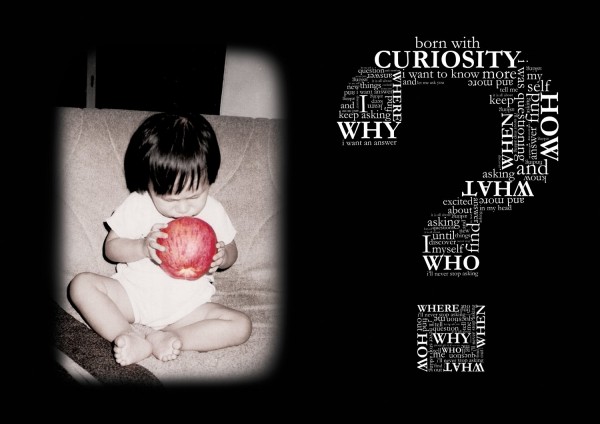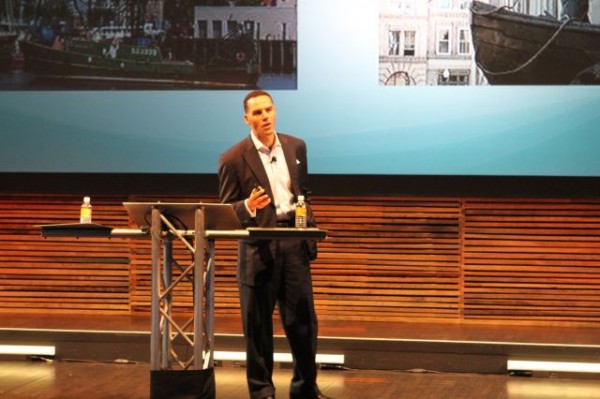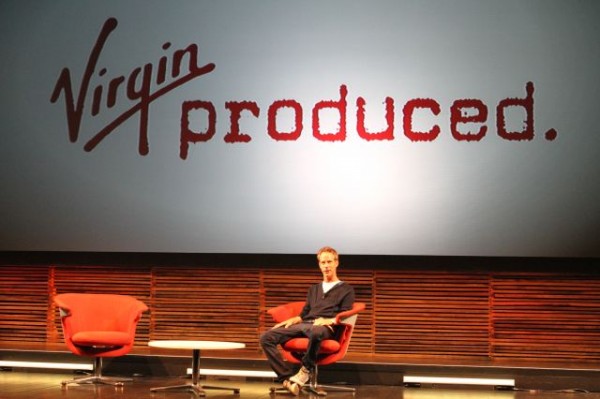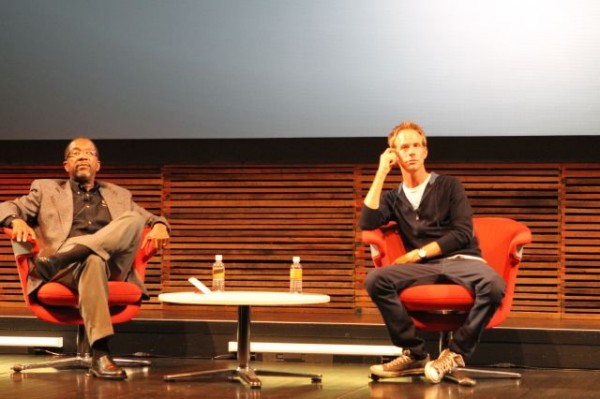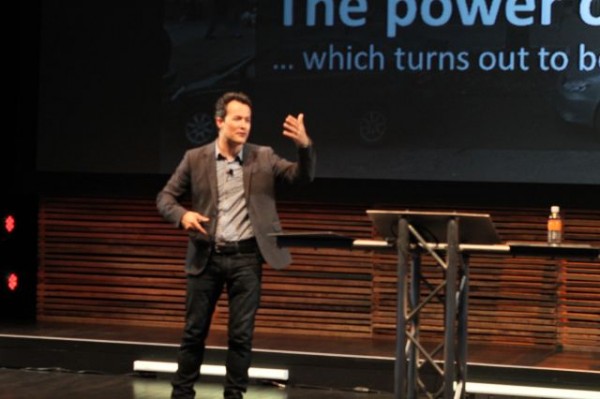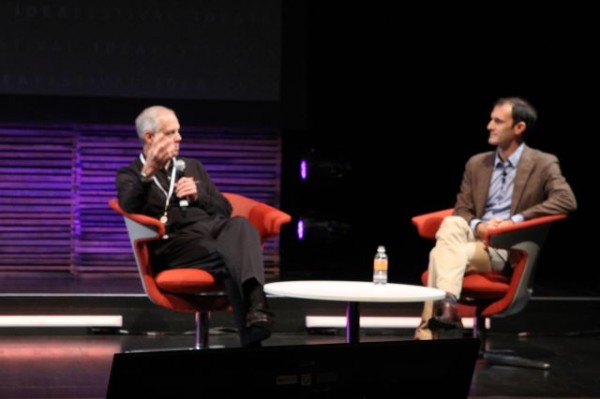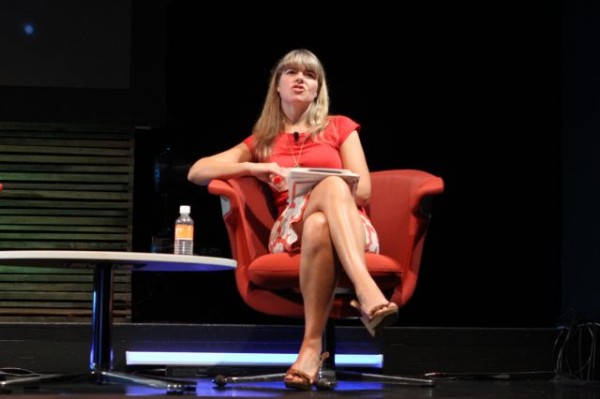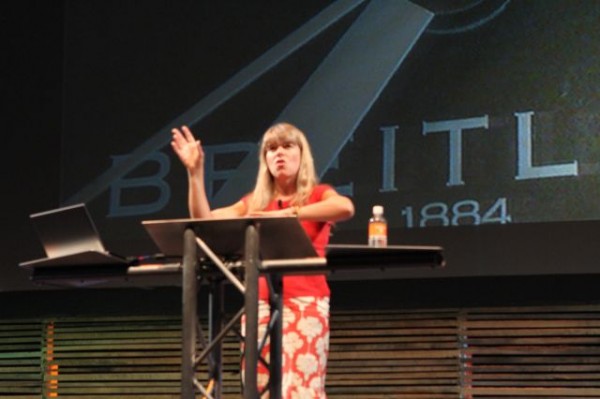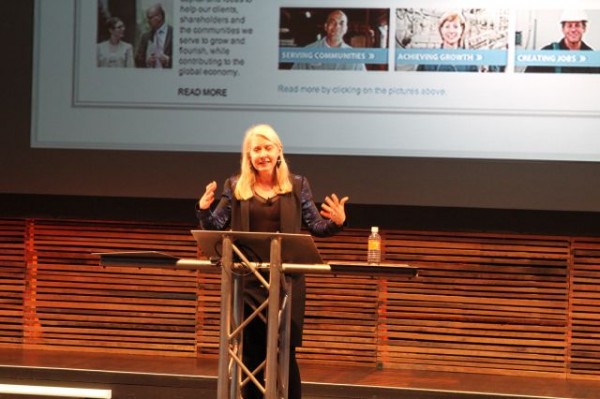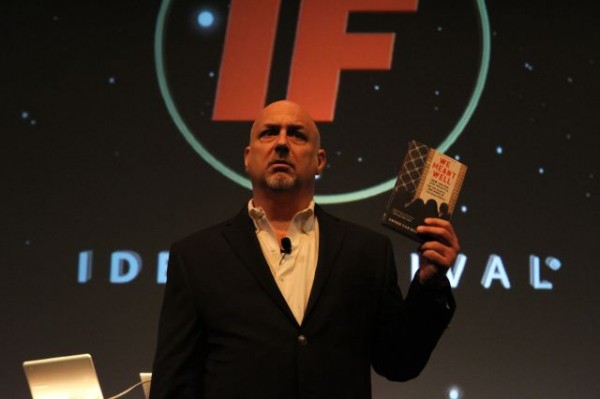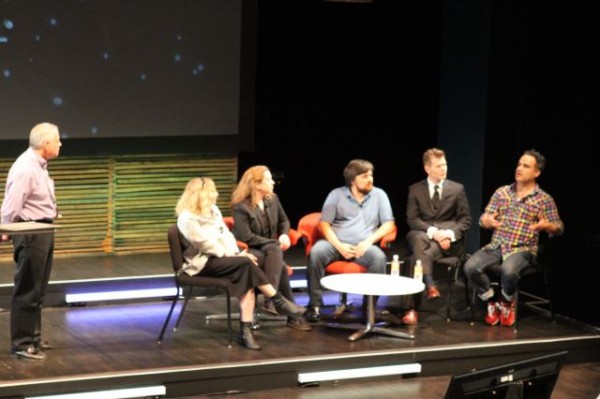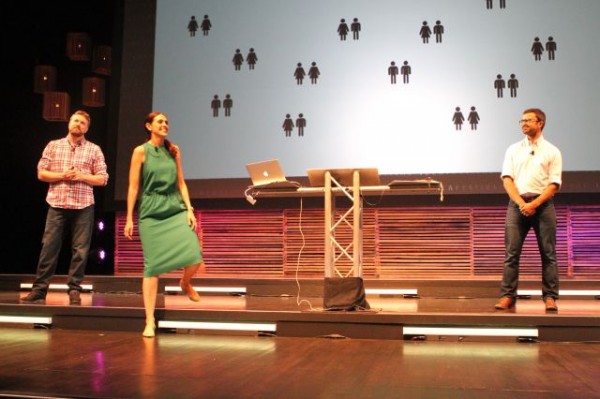Imagine an eclectic conference in the heart of bourbon country that brings together thought leaders, big thinkers, educators, scientists, politicians, urban planners, technologists, authors, artists, students and musicians under one roof? And…that is not by all means an exhaustive list.
Idea Festival is the one event that I’ve jumped on an airplane for every year, bound for Louisville Kentucky to make the time for a four day discussion on creativity and innovation. Last year’s event coverage will give you a taste of who they attract and while the focus may change slightly depending on who’s on the main stage, the mission remains the same: to Stay Curious.
Hear from founder and the force behind Idea Festival Kris Kimel; a snippet from a video I shot a couple of years ago will demonstrate his passion for the event and why he started it. Think of it as an intellectual playground in one of America’s most interesting southern cities where people celebrate ideas, creativity and transformational learning across multiple disciplines, including science, technology, design, education, philosophy, business and the arts.
While not in any of these categories, Walgreen’s Chief Diversity Officer Steve Pemberton received a standing ovation for his talk that not just touched on diversity but what it means to be human. His childhood was far from stellar, yet he managed to rise above inequality and obstacles thrown in his path to where he sits today.
Truth be told, his talk makes you care about kindness, rethink adversity and if you’re a business, understand the importance of diversity. Overcoming seemingly insurmountable odds, Pemberton has gone from being a forgotten ward of the Commonwealth of Massachusetts to becoming a trailblazing Divisional Vice President at Walgreens and the first Chief Diversity Officer for the 113 year old company. Prior to that, he made history as the first Chief Diversity Officer and Vice-President of Diversity and Inclusion for an Internet start-up while at Monster.com.
His memoir, A Chance in the World: An Orphan Boy, a Mysterious Past, and How He Found a Place Called Home, chronicles his difficult path through foster care and his determined search for his family. It is an inspirational story that crosses generations and cultures, but specifically whispers to those who have had the odds stacked against them. Pemberton’s relentless journey to overcome his setbacks, find his biological family and right the wrongs of his parents’ past is a model for all families to follow. It is a true testament of faith, fortitude and forgiveness and his talk brought his personal story to life in a heartfelt and very human way. As an audience, we wanted to cry and laugh with him at the same time.
Pemberton believes that who we are, our triumphs over adversity, and our successes begin and end with family. His rivoting talk was an exceptionally powerful sentiment from a man who fought to find his way and who in the end believes that you can choose your family after all. Hear hear.
CEO of Virgin Produced Jason Felts was also very inspirational, earmarking all the reasons why your status in life isn’t the main indicator of whether you’ll be successful in life or not. As one of the youngest CEO’s within the Virgin Group of companies, he oversees the group’s expansion into the film, television and new media content business.
While he may not have had to overcome adversity in the same way as Pemberton did early on in life, Felts isn’t an ivy league college graduate either. He comes to the business without the external accolades and degrees that a large brand might look for, yet he is now spearheading the Virgin Produced business, successfully bringing it to the next level. Richard Branson saw a gem when he met one and since 2010, Felts has been combining the strength of his raw wisdom, his film experience, his authentic charm and down-to-earth approach to running a business to the Virgin Group.
What I loved about Felts when I first met him was his presence. How rare is it to find someone operating at that level who actually not just has presence on stage, but is truly present with you “in the moment” regardless of what value you can give him. I have met and worked with my fair share of CEOs and celebrities in my life and more often than not, the charm is accelerated only when they realize you can give them something they need. Not the case with Felts.
Like Branson, he hates the status quo, and word has it that “he’ll cut off your tie if you wear one into his office.” His background is primarily in film and TV production, so it’s ever so fitting that he’s such an instrumental force behind the entertainment side of Virgin’s business. Says Jason on the Idea Festival stage, “Create content that inspires. Trust comes first, competency second and then creativity.”
He notes that at Virgin Produced, that the culture is a combination of down-to-earth and creative. “People don’t operate from a place of ego,” he says. “We talk issues out like a family.” He sees Richard Branson as a tremendous mentor, a personality which is hard not to love. As a man who who has always led with adventure, he has never let obstacles get in the way of business or life. Branson chooses his partners, not the other way around Felts learned when he came on in 2010.
It was a leap of faith on both sides and it appears to have paid off. The word trust came up a few times, which is a great way to lead your business. Jason says, “Everything else follows trust! If you surround yourself with people you trust, the rest comes. Revenue follows trust!”
The Virgin brand for him exudes a combination of innovation, creativity and value for the money. He says, “with Virgin movies, we want people to leave thinking there’s a sense of fun, adventure and thrill to the Virgin brand as well as a sense of wish fulfillment and social responsibility. We follow our gut and we’ve been winning so far.”
He feels that the traditional trailer is dead….and deceiving. “There’s way too much content out there and it’s a little misleading,” he says. Content overload is certainly not a new problem but it has now expanded into all areas of digital content including movie trailers. He says that their movies are not going to appeal to everyone, but if it touches a certain demographic, then it’s a check box for them since they lead with quality, not revenue.
Felts thinks we need to start tailoring things to the individual and become more personalized. Later in his talk, I learned that it wasn’t Branson who passed on the heartfelt authenticity and warmth that Felts so naturally exudes; it was his mom.
He shared one of his mom’s sayings: “Love the ones you’re with” and it’s something that Felts practices. I met him at the beginning of the conference and every engagement I had with him throughout the event albeit brief, was genuine. Imagine if all leaders and CEO’s could be that present who they could further inspire, motivate and ignite? He ended with a comment that touches on the infiltration of technology in our lives, something he also practices by not using his cell phone when he’s with his family.
His parting comment: “I think it’s up to forward thinking people to keep us together as a community rather than breaking us apart.” Thanks for being so damn refreshing Jason Felts. I loved your energy, your talk and your very fun suggestion to bring the audience up on the stage with you at the end of your talk for a true-blue selfie!
Wired Magazine and New York Times writer Clive Thompson amused us with his tantilizing talk about technology, social media and the changing landscape; how technology is fundamentally changing the way we think….often in ways we don’t fully understand.
He cites an example from a Clarke college professor who said this of her students: they were often content to get a bad grade from me than have the Wikipedia community tell them their research is sloppy. There’s no doubt that thinking about knowledge, education and the perception of both has changed dramatically over the years. We still gravitate to what we know and feel comfortable with just as we did 100 years ago and today, our peers are doing very different things and communicating in ways that the last generation doesn’t quite understand.
Texting, sexting, facebook pokes, tweets and Instagram shares have become commonplace, not just once a day but regularly throughout the day, whether or not school or work is part of that day. While like continues to find like, multiples exist more than ever in the past. You know — that big idea you’ve got? Well a couple dozen other people around the world also have it and unlike 50 years ago, they can share that idea instantaneously on the web, whether or not they’ve created a patent for it or plan to.
He has learned through his observations over the years, that as social media has exploded, the way we learn and think has changed. Thompson says, “we try harder, think more deeply and analyze more clearly when someone is watching.” Citing another piece of research from “Mimi in Tokyo,” he shares that young lovers in Tokyo in the 1990’s found that texting makes them feel closer than even a phone call.” It makes sense in some ways since texting not only provides the immediacy of a response but its lasting and you can scroll back and look at those whimsical and romantic messages hours later.
For those who don’t understand Twitter, he tries to explain its value in this context: a few ambient signals mean nothing on their own but months of them starts to have meaning which ultimately becomes ambient awareness — kind of like what happens when we have ESP and can sense people’s thoughts.” As a regular Twitter user, I see this all the time and over time, learn more about people I’ve known for over ten years by observing their tweets over a couple of months. It’s astonishing and eye opening, however those who are new to social media or simply don’t want to invest the time, still can’t get their head around it.
Other interesting observations from online behavior found that weak ties in our lives (i.e., people we see once a year perhaps) can be more powerful in some cases than strong ties (people we see every day and are close to). Quite often, the most new and valuable information comes to us from people we don’t know very well. The notion is that people in our closer circles are too similar to us so we don’t necessarily learn something new from them.
The other trend is data gathering and data crunching. Suddenly people are becoming accustomed to monitoring not just any data trend, but their own personal data, on a regular basis. Fitbit and other digital health connected devices such as the Kolibree connected toothbrush are prime examples. Suddenly, you can have data about your behavior in real time on your smart phone, data that you can share with your loved ones, doctor or dentist. Is this trend turning everyone into data scientists? And, if so, what will the impact of that be on medicine, healthcare as we know it and general wellness and being?
What about once all of that data becomes connected? AND, what about when our minds can become “connected?” What is the powerful explosion that we could see in the future when we start collaborating on things that collectively and individually fascinate us? How do we effectively tap into collaborative thinking? People are already doing it in multiple ways, ranging from individual data collection around a regional environmental disaster to solving a medical research problems.
One of the things we talk about a lot in Silicon Valley is the power of collective data and thinking. Crowd-sourcing, crowd-thinking and crowd-creating are topics that are sprouting up as TED talks, at salons in people’s private homes and in my own tech circles.
If gamers can tackle a ten year old protein folding mystery in HIV research, then what else could we solve from human collective intelligence? I think about the empowerment this approach can have with children. Coming from an era where children were around to be seen, not heard, I know countless people from my generation who have confidence issues as a result of that mantra and way of thinking. I’d love to meet the next generation of students where the power of human collective intelligence is applied in schools and at home.
Thompson points out that private thinking is of course still vital and that we need “metacognition” aka to think about our thinking. Which problems are better to solve in public collectively and which ones to solve privately in solitude? I agree with this, however the problem with the growing interest in an always on world where everything is open and digitized is that people sometimes forget that some things truly remain private and should. It takes discipline and a little reflection (which I feel that we rarely get in an “always on” world) to know where to turn and when.
Philosopher Stephen Cave discussed how the relentless quest to live forever…physically, spiritually or perhaps through a legacy, has influenced and shaped civilization since the dawn of humankind. He points out that its not just our lives here, but eternity, which is what makes every ‘holy war.’
He notes that we think the world is dependent upon our perceiving ourselves within the world, but in fact, its just an illusion in our brains. Every creature is trying to pass on their genes in order to reproduce and survive, so this is part of our desire and fascination with living forever, at least through legacy. If our time is in fact limited and not eternal however, then the way we spend that time matters.
He humorously says, “imagine that you go to an upload enter every week and upload your mind for a new upgrade or app. You could essentially save your brain to this upload center and then if you were to get killed in a car accident, you would simply re-upload your brain into another body and have a replicate of you. But…it’s still a copy.”
In his book, he tackles all the things that compel humans to “keep on keeping on,” including some mind-bending thought experiments you could do yourself. He teases out the implications of each immortality gambit, asking, for example, how long a person would live if they did manage to acquire a perfectly disease-free body. Or what would happen if a super-being tried to round up the atomic constituents of all who have died in order to resurrect them? Or what our loved ones would really be doing in heaven if it does exist? Or what part of us actually lives in a work of art, and how long that work of art can survive?
He makes you think about immortality in a very different way and as a result, focus on things that do matter in the process — at least, that’s what his talk did for me. If we could only be present on the hear and now more often, we’d have less fear, uncertainty, doubt and chaos in our lives.
Coming over from London, Claudia Hammond took on the topic of Time, making us think differently about how we perceive time. She talked about how and when time appears to be distorted, such as when we’re not feeling well, are sick and have a temperature, are depressed, or not feeling as confident about ourselves. She has been so fascinated by this topic that she has gathered research and examples of people’s interaction with time itself.
You could try your own exercise by counting a series of “how am I feeling now?” and Now? And Now? Count up all of these emotional moments and see how you perceive time throughout the process.
What fascinates her about time, is that there have been years, decades and centuries that have passed by before our lives, yet we always have a different idea of the length of time as we get older. Apparently 1 in 5 people visualize time laid out before them. They might see the year laid out in front of them in space and time for example. This is you if you can see in your mind’s eye what you are doing in February of a particular year.
There are 2 different kinds of time metaphors she notes. The Time Moving Metaphor, where you stay still and time comes towards you and the Ego Moving Metaphor, where you see yourself running and going towards time.
Perceptions of time in our personal life are around 3 months. If you think you saw friends 3 months ago, it might actually be 4 or 5 months. For other types of events, it’s a few years. When you think something happened 3 or 4 years ago, it might be a third longer or in some cases, even longer than that, such as 9/11 or a political event. People don’t report that days go really fast, but do report that weeks and months fly by.
If you ask someone when they’re older, what song they love, they’re more likely to pick a song they loved between the age of 15 and 25. Memories seem to be stronger during that period of time. Try this exercise out on a few friends and see it this applies.
She suggests that if you want to make a weekend seem long, do lots of new things you haven’t done before. For example, do something new you’ve never done before in the morning and something entirely different in the afternoon. Doing so in this pattern will create new memories for you. Creating new memories makes you think less about time because you’re too busy having a good time as you create new and fresh memories, not ones that make you feel stagnant and still. If time is going slowly, it may mean you don’t have a lot going on in your life.
Then there’s the perception of time in the future. “There’s been less research on how we perceive time in the future and more on how we perceive time in the past,” says Hammond. “We can actually go back in the past and recall our first day at primary school, but if asked to imagine that you’re going to a friend’s wedding in the Caribbean, you can build visuals of what you think it will be like and how the weekend will go, but it’s a entirely different memory and idea of time.”
The general concensus is that we’re bad about making predictions about time and tend to underestimate how long something will take us. To improve memory and our perception and improvement of time, she suggests picturing yourself doing an activity you need to do over and over again. Fascinating talk. I also loved her energy and it was fabulous to hear a British accent on stage!
I’ve known Virginia Postrel for quite possibly 20 years or so. I have always loved her work as far back as I can remember when she was more focused on politics than style. Today, and for many years now, she has been focused on style and the power of glamour although her work spans a broad range of topics, from social science to fashion, concentrating on the intersection of culture and commerce.
Writing in Vanity Fair, Sam Tanenhaus described her as “a master D.J. who sequences the latest riffs from the hard sciences, the social sciences, business, and technology, to name only a few sources.” She has written a few fascinating books worth mentioning. including her most recent one — The Power of Glamour: Longing and the Art of Visual Persuasion, as well as The Substance of Style and The Future and Its Enemies.
Her talk focused on the Power of Glamour and how it impacts us in our daily lives, from politics and sports to health and fashion. She so beautifully separates glamour from glitz, revealing what qualities make a person, an object, a setting, or an experience glamorous.
What is it that creates that pleasurable pang of desire—the feeling of “if only”? If only I could wear those clothes, belong to that group, drive that car, live in that house, be (or be with) that person? Postrel identifies the three essential elements in all forms of glamour and explains how they work to create a distinctive sensation of projection and yearning.
She delves deep into what glamour really is—not just style or a personal quality but a phenomenon that reveals our inner lives and shapes our decisions, large and small. By embodying the promise of a different and better self in different and better circumstances, glamour stokes ambition and nurtures hope, even as it fosters sometimes-dangerous illusions. From vacation brochures to military recruiting ads, from the Chrysler Building to the iPad, from political utopias to action heroines, Postrel argues that glamour is a seductive cultural force. Its magic stretches beyond the stereotypical spheres of fashion or film, influencing our decisions about what to buy, where to live, which careers to pursue, where to invest, and how to vote.
I saw Peter Van Buren on the Idea Festival two years ago after he launched his book We Meant Well and we all thought he was a brave soul then. His story is a complex one and definitely not short. As a former United States Foreign Service employee, he went through a struggle with the Department of State after writing his first book. In detail, Van Buren gives an eyewitness account of the civilian side of the surge—that surreal and bollixed attempt to defeat terrorism and win over Iraqis by reconstructing the world the U.S. had just destroyed. Van Buren shared his year-long encounter with pointless projects, bureaucratic fumbling, overwhelmed soldiers, and oblivious administrators secluded in the world’s largest embassy.
Since then he has been giving talks about his story but now has a new heartfelt mission. His latest book Ghosts of Tom Joad: A Story of the #99 Percent documents the changes happening in America that are negatively impacting the 99% and helping to make the top 1% earners flourish more than ever.
As documented on the web, Ghosts of Tom Joad is a reimagining of Steinbeck’s classic The Grapes of Wrath, brought into our own era. The book traces the dilution of our middle class, their replacement with the working poor, and examines the effects of this not just on our economy, but on our society, our nation, our America. Like Grapes of Wrath, Ghosts is a factual look at ourselves is wrapped in fiction, in this case, a single Ohio family touched by the changes in America from the 1950s through today.
The book is a story about growth, failure, and redemption, tracing the rise of the working poor and the don’t-have-to-work-rich as it follows the fortunes of the protagonist Earl. A product of the post–Korean War era, Earl witnesses his parents’ kitchen table arguments over money—echoed in thousands of other Rust Belt towns—experiences bullying, relishes first kisses, and comes of age and matures as a man before the economic hardships of the 1980’s and 1990’s wear on his spirit.
On the Idea Festival stage this year, Van Buren brought up fact after fact supporting some of the core changes happening in corporate America, particularly the top American employers and the impact on the 99%. While costs are skyrocketing, wages are not keeping up with inflation and it’s becoming increasingly difficult for the now 99% who are struggling to survive in today’s increasingly competitive world. As he did two years ago, he brought this knowledge to life in a very human and compelling way, so rivoting and passionate that you feel as if you want to help in some small way. And as you think about helping in some small way, you realize that you too are being impacted by these economic changes in more profound ways than you may have first realized.
The theme here is the obvious growing divide between the working class and that 1% – in other words, what has happened to the middle class as we knew it? He threw out some stats. 10% of wealth holders own 70% of everything and the U.S. is ranked 85 on the economic inequality scale. Did you know that Bill Gates could buy Boston and have a billion left over? And, did you know that 1 out of 3 retail workers get food subsidies because they can’t earn enough not to? Poverty is a $14b business he cites.
He gave advice to the students in the room – “don’t buy into the myth,” he told them. “The U.S. is in the 20% of nations that doesn’t offer some kind of nationalized healthcare. We have convinced people that if you don’t work, you won’t get healthcare. We’ve convinced ourselves that if we raise the minimum wage that we’ll have less jobs out there. Don’t be afraid. There needs to be more interplay between us and those who control everything. The people who have the most to gain from the system have created the system. We saw the greatest redistribution of wealth in the 2008 recession. The pattern continues. Stand up and have the conversation so that this pattern doesn’t continue any longer.”
He is working on a new book Post Constitutional America, which will cover what we’ve lost as a nation since 9/11, including our privacy.
Insightful, sad and disheartening, yet with knowledge and awareness comes empowerment and power.
Other powerful talks came from Jason Padgett and Joshua Greene (both pictured below). Jason was a former furniture salesman who was violently assaulted, which resulted in a serious head injury. The result was a brain who thinks differently, so differently that he now sees things in complex mathematical structures and patterns. He shared his remarkable journey with us and whether you’re passionate about math or not, you couldn’t leave the auditorium without feeling intensely moved by his story and more keen than ever to understand the hidden capabilities of the mind, learning and the nature of reality itself…
Joshua Greene is a Harvard professor who connects neuroscience, psychology and philosophy to illuminate the root causes of modern conflict in the world, along with the moral, political and ideological fault line that divides us. His talk was entitled Us and Them. The real question at the end of the talk to ourselves was are we the “us” or are we the “them?” and how many of us have been both over the course of our lives?
His talk was based on his book Moral Tribes: Emotion, Reason and the Gap Between Us and Them. Essentially the notion behind the book comes from the thinking that our brains were designed for tribal life, for getting along with a select group of others (Us) and for fighting off everyone else (Them). But modern times have forced the world’s tribes into a shared space, resulting in epic clashes of values along with unprecedented opportunities. As the world shrinks, the moral lines that divide us become more salient and more puzzling. We fight over everything from tax codes to gay marriage to global warming, and we wonder where, if at all, we can find our common ground.
Through his research, he reveals the underlying causes of modern conflict and lights the way forward. Greene compares the human brain to a dual-mode camera, with point-and-shoot automatic settings (“portrait,” “landscape”) as well as a manual mode. Our point-and-shoot settings are our emotions—efficient, automated programs honed by evolution, culture, and personal experience. The brain’s manual mode is its capacity for deliberate reasoning, which makes our thinking flexible. Point-and-shoot emotions make us social animals, turning Me into Us. But they also make us tribal animals, turning Us against Them. His work is important as was his talk.
Geopolitical strategist Peter Zeihan talked about the rapidly changing global scene and its potential impact on international business, finance and the U.S., Lee Billings took us into a world of five billion years of solitude, Wynton Marsalis discussed the dynamics and irreplaceable role of art and creativity in America and Julia Whitehead led a conversation on the life, ideas and enduring influence of Kurt Vonnegut.
Andrea Nicholas and Sarah Eichhorn explored how math and science can help ensure our survival in a zombie apocalypse (no typo here and yes, it was a fascinating talk), Sam Van Aken incorporated art and ideation in a way that can transform and confuse the common sense of practices; the established order of things, Ben Malphrus and Roger McNeil took on the subatomic world of quantum weirdness and black holes, Debbie Millman focused on overcoming rejection and failure and how its presence can be a necessary part to your path to success, and Tyler Cowen explained why being satisfied by “pretty good” in today’s innovation-driven, hyper competitive world may in fact be just a fast track to irrelevance.
An annual presentation at Idea Festival for many years now, Creative Capital shows up with a handful of creative artists. Creative Capital has awarded $30 million to 530 groundbreaking artists nationwide through funding, counsel and career development services. This year, Ruby Lerner once again brought their latest artists on stage to show off their creative ideas and projects in a session entitled “Art on the Edge.”
Each year as part of Idea Festival, attendees flock to the annual Taste of Innovation event. This year’s Taste of Innovation had an interesting twist to it – it was a Taste of Innovation + Bourbon, so fitting for a Kentucky based food event.
This food lover’s event is always held at Churchill Down’s Millionaire’s Row, also fitting given that it’s the same venue as the infamous Kentucky Derby where people flock to from around to sip some of the finest bourbon in the country, wear exquisite hats that would make the Epsom Downs attendees jealous and watch horses win races that bring in millions. Below, some of the locals who showed me a night out on the town and introduced me to some of the more interesting bourbon creators and makers.
The Rise Group exuded energy on the main stage, demonstrating all the ways we can operate at a higher level. Their methods are grounded in everyday language of how we present ourselves and how we think, using tactics and tools to enable us to become more creative and innovative in our daily lives. Their presentation was fun, thought provoking and energetic and these principles can be used in corporate America, at a start-up or in our personal lives.
While every year they have bourbon vendors on-site, this year let bourbon led the way with taste and education. Top bourbon experts were on site to answer questions and give pours, with Chef Dean Borbett acting as the Master of Ceremonies. With the help of the Kentucky Distiller’s Association and Kentucky Bourbon Trail, tastings were available from major distillers as you also walked through the history of bourbon and bourbon cocktails. Bourbon was also woven into some of the dishes, the best of which was the bourbon braised short ribs prepared Manhattan style by Churchill Downs.
Be sure to see our more extensive write up on this year’s Taste of Innovation 2014 event. We loved every taste we had, but another one of our top picks this year was Marketplace who served Italian pork meatballs with a tasso ham sauce, polenta, feta cheese and granulated sumac. Everyone was talking about their perfectly made polenta all night and in fact I heard a few say, they’d return just to eat the polenta alone it was so delicious. Hats off to Chef Dallas McGarity and his team.
Also see our write up on last year’s Taste of Innovation, from 2012 Taste of Innovation and 2011. Check out our Kentucky Events section, which will include coverage of Idea Festival from last year (Idea Festival 2013), Idea Festival 2011 and Idea Festival 2012 and also our Kentucky Food & Wine section where you’ll find plenty of recommendations and visual treats on the top Louisville Restaurants.
Louisville restaurants we’ve written about over the years include Proof on Main at the well renowned 21c Museum Hotel, where I stayed this year, Seviche Restaurant (loved their seafood bisque – hats off to chef Anthony Lamas, Lilly’s (I love Kathy’s approach to cooking, her sweet potato gnocchi with country ham, kale and bourbon mustard cream sauce from a previous year was to die for as was this year’s portobello mushroom soup, although we have yet to review Lilly’s), Milkwood, Decca, Game (for every kind of game imaginable), La Coop Bistro, Mayan Cafe, Harvest, Jack Frys and The Blind Pig in Butchertown which is no longer open.
This year’s delicious picks include Basa Restaurant for Vietnamese Fusion style dishes and Rye on Market. Also be sure to read our Kentucky Food section for more details. (Top Kentucky Restaurants / Best Food in Kentucky / Best Food in Louisville).
Photo credits: top photo credit from blogs.uoregon.edu, Digital Overload photo www.principals. com.au. All other photos Renee Blodgett.
Note: I was a media partner of the Idea Festival and have been since the very beginning – I’m a huge fan of the event and think it is under recognized for its talent, work and mission. All opinions expressed are entirely my own.

Renee Blodgett is the founder of We Blog the World. The site combines the magic of an online culture and travel magazine with a global blog network and has contributors from every continent in the world. Having lived in 10 countries and explored nearly 80, she is an avid traveler, and a lover, observer and participant in cultural diversity.
She is also the CEO and founder of Magic Sauce Media, a new media services consultancy focused on viral marketing, social media, branding, events and PR. For over 20 years, she has helped companies from 12 countries get traction in the market. Known for her global and organic approach to product and corporate launches, Renee practices what she pitches and as an active user of social media, she helps clients navigate digital waters from around the world. Renee has been blogging for over 16 years and regularly writes on her personal blog Down the Avenue, Huffington Post, BlogHer, We Blog the World and other sites. She was ranked #12 Social Media Influencer by Forbes Magazine and is listed as a new media influencer and game changer on various sites and books on the new media revolution. In 2013, she was listed as the 6th most influential woman in social media by Forbes Magazine on a Top 20 List.
Her passion for art, storytelling and photography led to the launch of Magic Sauce Photography, which is a visual extension of her writing, the result of which has led to producing six photo books: Galapagos Islands, London, South Africa, Rome, Urbanization and Ecuador.
Renee is also the co-founder of Traveling Geeks, an initiative that brings entrepreneurs, thought leaders, bloggers, creators, curators and influencers to other countries to share and learn from peers, governments, corporations, and the general public in order to educate, share, evaluate, and promote innovative technologies.

